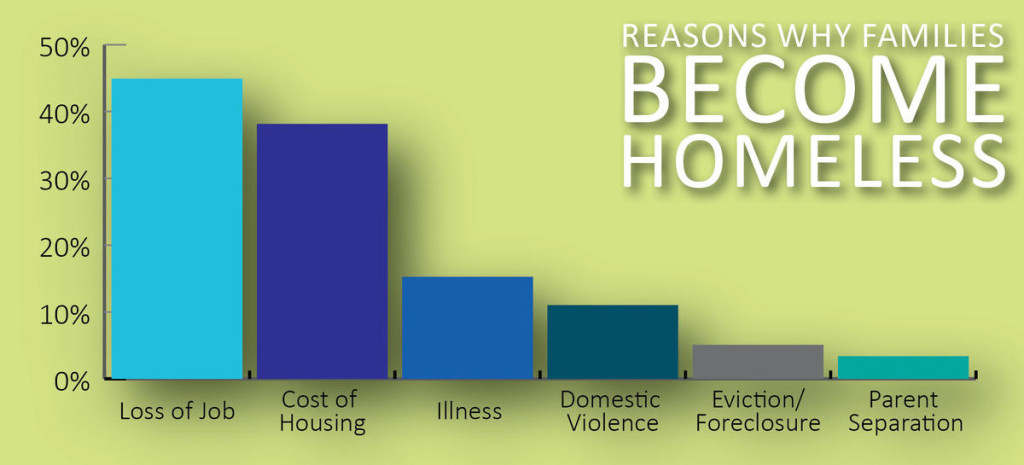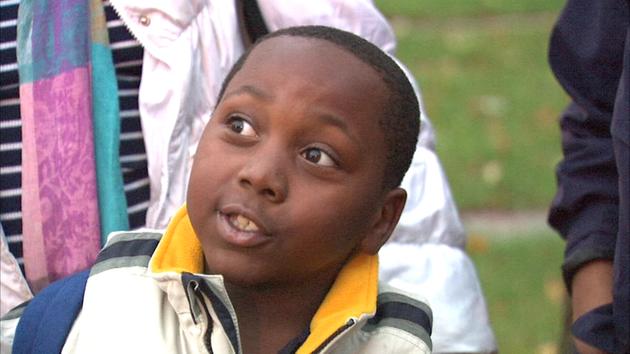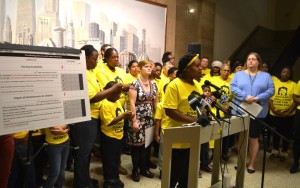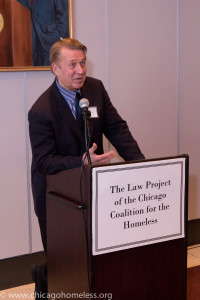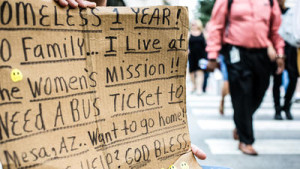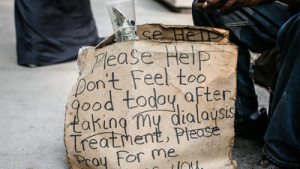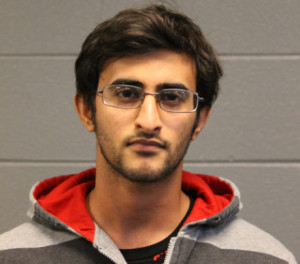By Maureen Foertsch McKinney
The first installment in a series on homelessness looks at a campaign to get the city and public schools to target the needs of homeless Chicago students.
Tristian Ellis’ test scores in reading and math dropped dramatically this fall from last. The difference: the Ellis family had its own apartment last year. Now, the family of four stays in a shelter on Chicago’s far north side.
For the 8-year-old student, who attends LEARN Excel Charter on the city’s northwest side, distractions abound. His mother, Latoya Ellis, lost her job in August and moved into the shelter a month later. She describes being homeless as “a very devastating experience,’’ which is particularly hard on Tristian, her youngest child.
Of the shelter, she says: “It’s a big open space, and there’s always things going on. There’s nowhere private or quiet for the children to focus on their studies, especially with my son because he’s still very young. If he sees five other kids running around and playing, he’s very distracted. He wants to run around and play as well.”
Add to that a list of problems that includes poor sleep, unbalanced meals and an hour-plus commute from the shelter to school on a train and a bus.
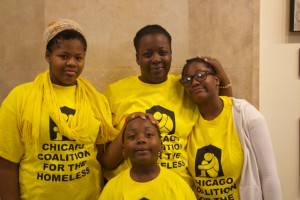
Recognizing the effect lack of permanent housing has on academic performance, those who work with the homeless in Chicago are making the case that the most important thing students need to succeed at school is a place to call home. They have called on the city to expand housing vouchers for 500 families.
An estimated 13,054 Chicago families experienced homelessness during the 2014-15 school year, according to the Chicago Coalition for the Homeless, which reports that fewer than 125 of those families find permanent affordable housing each year. There are about 22,000 homeless students in the district, which has 400,000 students in 600 schools.
The coalition issued a report yesterday calling for the creation of programs to help Chicago Public Schools students and their families find housing. “There’s a lot of research already out there about the negative impact of residential mobility on education. … It has a big impact on kids and their ability to learn,’’ says Julie Dworkin, director of advocacy for the coalition. “There’s also research about the opposite of that — that kids in stable housing, affordable housing, do better, and there’s lots of models around the country where the housing programs were really partnering with schools to identify families that need to be stabilized. It also helps the schools. The kids moving around is very disruptive to the school.’”
That report also calls for greater emphasis on homeless families — like the attention given to homeless veterans by the city of Chicago — and more funding being directed toward finding families housing.
In addition to the calls for new programs, the coalition also surveyed 118 families without homes. From that survey, the group collected information about the consequences of homelessness on students’ school behavior, which included sleeping in class, being withdrawn, being disruptive in class, getting into fights and receiving more discipline, including suspensions.
“How do you concentrate on your school work when you don’t know where you’re going to get off the school bus that night?’’ asks Spencer Cowan, senior vice president of research for the Chicago-based Woodstock Institute.
Dworkin says the coalition is asking the Chicago Board of Education to update its policies on homeless students. “We want them to make sure that everybody is trained on that policy and doing everything that they’re supposed to be doing. We want to see more liaisons in schools.”
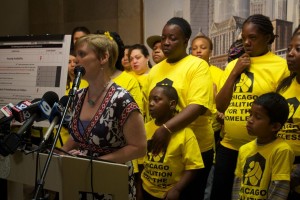
The report also calls for having the coalition partner with CPS to train staff “on sensitive and comprehensive identification of homeless students, including unaccompanied homeless youth.” It says Chicago Public Schools should “provide students who are homeless with rights and services, including immediate enrollment, transportation, fee waivers, tutoring, uniforms and dispute resolution.” And the coalition advocates for the school system to improve attendance rate, graduation rate and academic performance of homeless students.
“The Chicago Coalition, in sentiment and direction, in my view, is heading in the right direction,” says Dr. Ellen Bassuk, president of the Boston-based Bassuk Center on Homeless and Vulnerable Youth. She says the recommendations share an outlook with her recent report on how to end family homelessness.
Emily Bittner, director of communications for CPS schools, offered a written statement on this story after its release: “Chicago Public Schools is committed to providing students and families with the supports they need to access a high quality education, and our STLS (Students in Temporary Living Situations) program is designed to ensure that students without stable housing are receiving the services and supports necessary they need to be successful in school.”
Each school has a liaison for homeless students and the district waives fees for those in the STLS program, Bittner said.
One short-lived program for Chicago Public Schools students tied housing support to education. Federal stimulus funds were used to pay for the 2009-2010 program run by Beacon Therapeutic Diagnostic and Treatment Center and the Heartland Alliance. Even in that short time, improvements were measurable, says Susan Reyna-Guerrero, president and CEO of Beacon Therapeutic, a Chicago-based behavioral and mental health agency whose services include outreach to the homeless.
The program involved 611 children in 220 households. The families were in 31 schools in several areas of the city, but were mostly concentrated in the south side Englewood area. According to the final evaluation of the program, families received more than $1.5 million in rental assistance and nearly $100,000 in security deposits. Each household received $10,651 on average over the life of the program.
Reyna-Guerrero says students were identified through schools as being in an unstable living environment, and then evaluated for mental health issues and received services, including help for parents in finding employment.
Was it successful? “From our standards it was, because we were able to get these families housed. We did show growth in these families through some assessment tools. It was successful in demonstrating that this model of wrap-around services to these vulnerable families in conjunction with the schools can help stabilize these families,” Reyna-Guerrero says.
She says that because the project ended, the long-term effects on participating families were not documented. “These families, I would suspect, that some of them were able to continue on, but probably a reasonable amount of them probably need ongoing continuing support. Even though the program closed, we did provide referral and linkages to other programs. The model that we had developed where we were going into the homes and making very purposeful engagement is what a lot of these families needed.”
Dworkin says the coalition would like to see something like that re-created “where we’re connecting families identified by the schools with permanent housing resources and supportive services.”
Mike Bach, executive director of the Supportive Housing Providers Association of Illinois says he is not aware of similar programs being tried anywhere else in the state.
“Typically the supportive housing as a program does not have a school component. But the case managers who are involved with that supportive housing would do all of the connecting and linking with whatever it is that the family or the individual may need,” he says. For students, that might include helping kids sign up for school and get the supplies they need. “There’s collaboration, but I wouldn’t say there’s specific tutoring or support services to address the needs of kids staying in the shelters.”
In Rockford, one homeless service provider saw the need for such a program. “It seems … very important and something that could actually keep kids in school and not repeat that cycle,” says Sarah Parker-Scanlon, executive director of Shelter Care Ministries.
Dworkin says she recognizes that neither the state nor the city of Chicago have money for new programs. “The financial situation at the city level and the state level is so bad right now, we’re looking at existing resources that provide housing subsidies but aren’t necessarily targeting them towards homeless families.” She notes that the Chicago Housing Authority and the Chicago Low-Income Housing Trust Fund both have funding for such subsidies, “but it’s not necessarily targeted at homeless families, and we’d like to see more of it targeted that way.”
A spokesman for the CHA declined to comment without seeing the report. But when Housing Trust board president Thomas McNulty was asked whether his organization would support the coalition’s call: “I wouldn’t know why we wouldn’t. The Chicago Coalition for the Homeless is an ally in our mission to support housing opportunities for the poorest of poor. Our paths cross. “
The trust fund spent $15 million in 2014 to house 2,700 households and 5,000 individuals, he says. The coalition is asking for new housing units for 500 families, which family homelessness expert Bassuk says is too few.
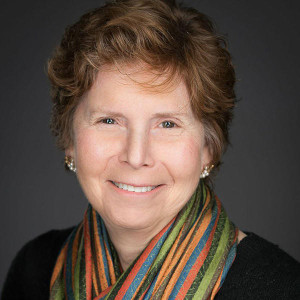
Federally, in recent years, most of the emphasis has been focused on individual homeless people, particularly veterans, Bassuk says.
“There’s been a real push to end not only chronic homelessness but veteran homelessness. The federal goal was by the end of 2015,’’ says John McGah, a senior associate The National Center on Family Homelessness. He is also executive director of Give Us Your Poor: The Campaign to End Homelessness based at the University of Massachusetts Boston’s McCormack Graduate School of Policy & Global Studies. That effort has been extended into 2016. A federal interagency council on homelessness created goals for ending chronic homelessness, veterans’ homelessness, family homelessness and youth homelessness. The family and youth homeless plans run until 2020.
McGah says that one reason the focus has been on individuals is the belief that the goal could be accomplished more quickly. “It’s easier with individuals as opposed to the dynamics of a family: there’s education, children’s health issues and developmental issues, and dealing with child welfare. It can get more complex when there’s more humans in the mix.”
The office of Chicago Mayor Rahm Emanuel announced on Veterans’ Day its attempt to end homelessness among veterans by the end of the year.
A spokeswoman for Emanuel declined to comment on the coalition’s report, which has not been released at the time of the request, but issued a statement: “The City of Chicago shares the Coalition’s unwavering commitment to supporting all of our homeless residents — especially our youth and families — in accessing shelter, services and ultimately, a permanent place to call home.” The mayor’s office says that since Emanuel took office in 2011, funding for homeless services has increased by more than 10 percent.
Long-term, Dworkin says, the coalition wants funding from a state capital budget. In Fiscal Year 2010, the state allocated $130 million for affordable housing. “We’d like to see that increased to $200 million in the next capital budget, with a dedicated portion to homeless families.”
But, at least in Chicago, the coalition wants a new focus on the problem, and Dworkin says it should emphasize education. “We really feel like getting a good education is the ticket out of homelessness and breaking the cycle for that family.”

